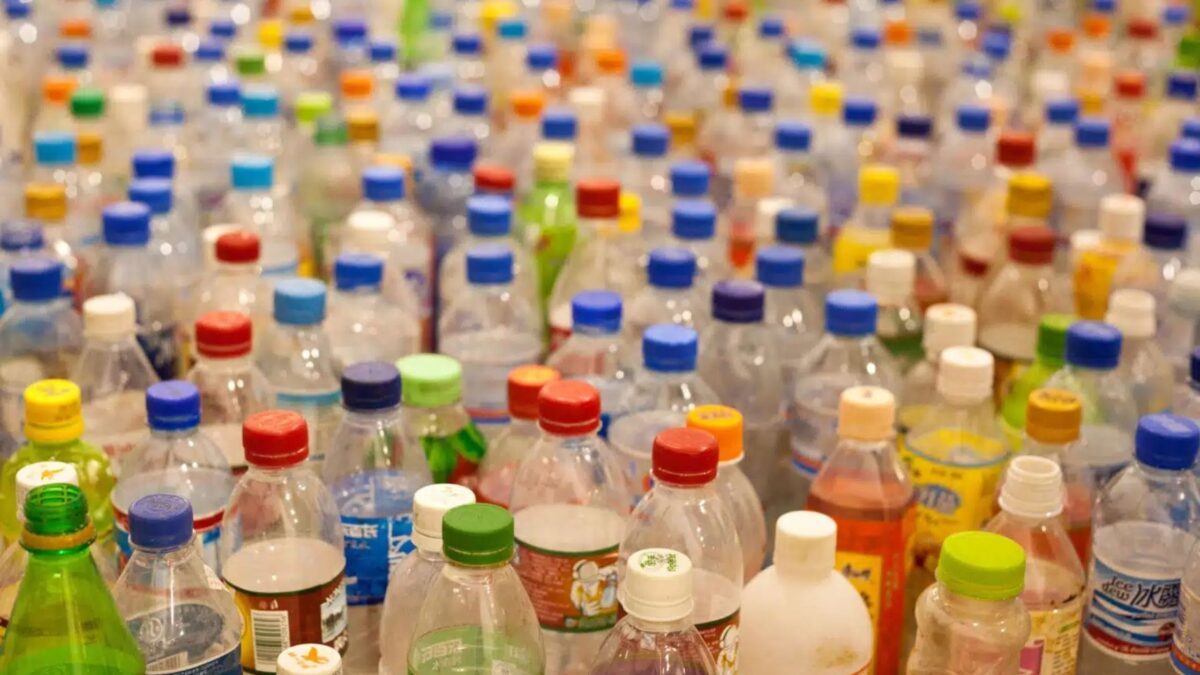
When I was applying to medical residency, the doctor interviewing me commented, upon seeing my interest in the impact of endocrine disruptors on women’s reproductive health: “Dr. Romm, you don’t believe in that BPA crap, do you?” This was years before definitive evidence proved the association between BPA and miscarriage, sometimes due simply enough to women working at checkout counters and airlines handling BPA-laden receipts and airline tickets, as Hugh Taylor, ironically then an OB/GYN at that same institution, blew the lid wide open on this connection, among others.
My own research already had me informing the women in my medical and miwifery practice about the potential hazards of BPA and other environmental chemicals that mimic our endogenous hormones, for ourselves and our children, before and after they are born. .
In February, a study published in Nature Medicine generated a slew of scary headlines: “Human brain samples contain an entire spoon’s worth of nanoplastics,” as CNN reported. Researchers had found several grams of tiny plastic particles in human brain samples—roughly the weight of a takeout spoon. Perhaps even more alarmingly: The level of plastics detected was nearly 50 percent more than found in brain samples from 2016.
While the frequently repeated estimate that the average person ingests a credit card’s worth of plastic every week is questionable, there’s no doubt that tiny shards of plastic are getting into our bodies—and even brains. How much should we worry about microplastics? What’s the current state of the science on their health risks? And what can you do—as an individual and collectively—to reduce your exposure? Let’s dive in…
What are microplastics and nanoplastics?
Synthetic plastic was first created in the late 1800s, but our reliance on it has increased in recent decades. More than half of all plastic ever made has been made since 2002. In 2019, 460 million metric tons of plastic were produced, and production is estimated to triple by 2060. More than one third of plastic produced today is for packaging, which is used only once before being thrown away. Overall, only 9 percent of plastic is recycled; the rest end up in our landfills and oceans.
As plastics degrade over time, it never really goes away—it just breaks down into smaller and smaller tiny pieces. Plastic particles that are smaller than 5 mm are microplastics and those smaller than 1000 nanometers are nanoplastics—1,000th the average width of a human hair.
That’s why microplastics and nanoplastics (MNPs) are literally everywhere in our environment—in the air we breath, the food we eat, and the water we drink – even in ocean depths where they get into the fish we eat, and remote mountains tops. Researchers think that they enter our bodies mainly via ingestion, but also inhalation. For example, the wear and tear on our car tires releases MNP particles that pollute the air. There’s even some evidence that we can absorb them via skin exposure, from personal care products like cosmetics—to which microplastics are sometimes intentionally added—and even our clothes —and our babies’ diapers.
Some microplastics—especially larger particulars—are cleared out of our bodies, but the tiniest nanoparticles especially are small enough to get into our bloodstream and travel throughout our bodies. They can cross the placental and blood-brain barriers and have been detected in human hearts, blood vessels, lungs, livers, testes, gastrointestinal tracts, placenta, semen, breast milk and even a baby’s first stool.
The most miniscule nanoplastics are so small they can end up inside individual cells, which experts find most worrisome when it comes to potential health impacts.
What do we know about the health effects of microplastics?
Research on MNPs’ health effects is still in its infancy. But a growing body of evidence suggests it’s not good.
Microplastics have been shown to accumulate in organs and lead to biological changes, including oxidative stress and inflammation in human cell lines. According to a 2024 systematic review of the research, published in Environmental Science & Technology—mostly animal studies—microplastics are suspected to harm reproductive, digestive, and respiratory health, possibly increasing the risk of lung and colon cancer. Emerging research also suggests links to metabolic disorders and a weakened immune system.
We also have good evidence that many of the 20,000 chemicals found in plastics—and therefore in micro and nanoplastics—are harmful to health, including per- and polyfluoroalkyl substances (or PFAS chemicals), bisphenol A, and phthalates. For example, a recent study estimated that exposure to phthalates in plastics contributed to 350,000 deaths from heart disease worldwide in 2018. The potential dangers from microplastics may come from the tiny particles themselves, the carcinogenic and endocrine-disrupting chemicals they leach, or some combination.
When it comes to human studies, we don’t yet have large epidemiological studies comparing the long-term health of those with more or less microplastic and nanoplastic exposure. Most of the human studies to date have been small ones that find a correlation between a higher burden of microplastics in certain areas of the body and disease.
For example, a 2022 study found that livers from people with cirrhosis have more micro and nanoplastics than healthy livers. A 2024 study published in the New England Journal of Medcine, found that patients who had MNPs detectable in their carotid artery plaque were at higher risk of heart attack, stroke, or death from any cause in the following years compared to those in whom plastics were not detected. Preliminary research released this year showed that the placentas of babies who were delivered preterm contained more MNPs than full-term babies. And in the new study of brain tissue, the researchers found three to five times more nanoplastics in the brains of people with dementia compared to healthy people.
However, it’s important to remember that correlation does not necessarily equal causation and it’s very possible that another confounding variable explains these findings—or that the causal arrow is reversed. For example, the researchers emphasize that people with dementia may have more plastics in their brain because their disease leads them to have a more porous blood-brain barrier and makes them less able to clear toxins.
We certainly need more research to definitively say that the levels of chronic exposure to microplastics that we are experiencing are actually causing health problems—after all, the dose makes the poison—but personally, I believe that the early data is alarming enough to compel us to take action to reduce our exposure.
How can we reduce our exposure?
First, as I always tell my patients – breathe. Given how ubiquitous microplastics and nanoplastics are in our food, water, and air, it’s not possible to avoid them entirely.
But there are some things you can do to reduce unnecessary exposures…including these steps that you can start implementing today.
- Don’t drink from plastic water bottles—especially if they’ve been sitting out in the sun. A 2024 study found that 1 liter of bottled water—the equivalent of two standard-size bottled waters—contained an average of 240,000 plastic particles from seven types of plastics. Some 90 percent of those were nanoplastics.
- Avoid heating food or water in plastic. And consider switching to glass or steel containers for food storage more generally. A 2023 study found that within 3 minutes of microwave heating, some containers released as many as 4.22 million microplastic and 2.11 billion nanoplastic particles from only one square centimeter of plastic area. Storing food in plastic containers in the fridge or at room temperature was much better, but after six months, they also released millions to billions of microplastics and nanoplastics.
- Eat lower on the food chain and avoid highly processed foods. There’s evidence that plants take microplastics up from the soil and incorporate them into their roots and leaves. The higher up the food chain an animal is, the more microplastics have likely accumulated within them. Highly processed foods also seem to contain more microplastics, potentially because of contamination from processing machinery. In a 2024 study, researchers compared the level of microplastics in over a dozen types of protein products—seafoods, meats, and plant-based proteins—and found that highly-processed products contained the most microplastics per gram.
- Avoid heating plastic baby bottles—or switch to glass bottles. A 2020 study published in Nature Food found that shaking room temperature water in polypropylene baby bottles released hundreds of thousands of microplastics and when the temperature was raised to 158 F—as required to prepare powdered formula—they released anywhere from 1 million to 16 million microplastic particles per liter, as well as trillions of smaller nanoplastics. Consider switching to glass bottles. Or if using plastic bottles with powdered formula, prepare it with 158 F water in a glass container, then let it cool to room temperature before transferring it to the plastic bottle. Researchers also recommend that when sterilizing plastic bottles with hot water to let them cool completely before rinsing them out at least three times with previously boiled water that’s been allowed to cool to room temperature.
- Try to avoid plastic items for your young children more generally. A 2021 study found that babies’ poop contained an average of 36,000 nanograms of polyethylene terephthalate (PET) per gram, 10 times the amount found in adult feces. Researchers think infants and toddlers may ingest even more microplastics than adults because, in addition to often drinking from plastic bottles, they tend to put everything in their mouths—including clothes, plastic toys, utensils, sippy cups, teethers, and pacifiers.
- Switch to wood or bamboo cutting boards. A 2023 study suggests that plastic cutting boards can be a significant source of microplastics in your diet, contributing tens of millions of microplastics annually.
- And don’t forget about plastic tea bags! A 2019 study found that steeping a single plastic teabag releases approximately 11.6 billion microplastics and 3.1 billion nanoplastics into a single cup of the beverage.
- Regularly vacuum and damp mop, and use an air purifier with a HEPA filter to reduce the amount of microplastics in the air and dust within your home. This is especially important if you have small babies and toddlers in your home, who crawl on the floor where microplastics that have shed from clothing, furniture, and carpets can accumulate.
- Avoid microbeads in cosmetics, a form of microplastic that often appear in scrubs, cleansers, and even toothpaste as exfoliants, as well as in foundations, sunscreens, shampoos, and deodorants as fillers, binders, or film-formers. Products with glitter or shimmer may contain plastic-based particles too. Choose natural exfoliants like sugar or oats, and look for certified microplastic-free or eco-labeled brands. Helpful tools like the Beat the Microbead app can scan products and flag hidden microplastics.
- If you can, choose clothes made of natural fibers, like cotton or wool. Wash synthetic fibers, like acrylic or nylon, before wearing them the first time to remove microplastics. You can listen to my podcast, How Toxic Fashion is Making Women Sick & What We Can Do About It with environmental clothing activist Alden Wicker.
The Precautionary Principle
It's important to acknowledge that it’s not at all clear how much taking these kinds of steps to reduce plastics in your homes and routines will actually reduce your overall body burden of microplastics and nanoplastics. We don’t yet know how much our exposure from things like cutting boards or water bottles or food storage containers compares to our exposure from drinking water, eating food, and breathing the air.
In fact, some researchers on MNPs think we should be most concerned about the extremely small nanoparticles from plastics that have degraded in the environment long ago, rather than so-called “fresh” microplastics released from things like cutting boards and water bottles since those particles are much larger, and research suggests that the body clears out some larger microplastics.
But given the growing body of evidence on microplastics, I believe in embracing the precautionary principle, which says that when an activity poses a threat to human health or the environment, precautionary measures should be taken even if some cause-and-effect relationships are not fully established scientifically. This means taking proactive measures—both individual and collective—even in the face of scientific uncertainty.
While I think individual efforts to reduce your exposure are worth doing, ultimately, we need to collectively advocate for systemic changes to the way we manufacture and safely dispose of plastic and for the use of safer chemicals in plastics. As Dr. Philip Landrigan, director of the Program for Global Public Health and the Common Good at Boston College, and the man responsible for discovering that lead in paint and gasoline was affecting childrens’ cognitive development, whom I interviewed for the podcast says, “Just because we don’t know everything there is to know about every chemical in plastics does not mean we should not take action against the plastic chemicals we know are bad actors.”
Given the life cycle of plastic, taking action is important not just for us—but for future generations. The plastics discarded today will continue to degrade into microplastics for centuries, impacting not only ourselves but also our children and grandchildren. Reducing our personal exposure, supporting our body's resilience, leveraging our economic power as consumers, and advocating for systemic change are not just about avoiding potential harm to ourselves; they are acts of responsibility towards a healthier future for all.
More articles:
https://www.nytimes.com/2025/05/20/well/microplastics-health-risks.html
https://www.nytimes.com/2025/04/08/well/microplastics-health.html






